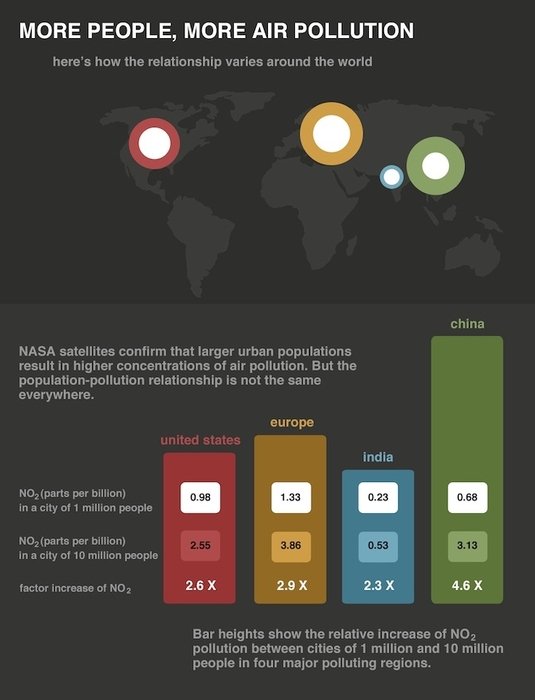Scientists measured how the relationship between pollution and urban population varies by region. Credit: NASA Goddard/Kathryn Hansen
GREENBELT, Md., Aug. 19 (UPI) -- Scientists at NASA say they have been able to use satellites to calculate the relationship between pollution levels and urban population.
Researchers used satellite observations to directly measure air pollution's dependence on population in four of the planet's major air pollution regions: the United States, Europe, China and India, the U.S. space agency reported Monday.
The pollution-population relationship varies by region, they found, a reflection of regional differences such as industrial development, per-capita emissions and geography.
For example, a city of 1 million people in Europe experiences six times higher nitrogen dioxide pollution than an equally populated city of 1 million people in India, researcher Lok Lamsal of NASA's Goddard Space Flight Center in Greenbelt, Md., said.
The researchers focused on nitrogen dioxide, or NO2, a common pollutant from the burning of fossil fuels that can cause respiratory ailments and is a problem in many major metropolitan areas.
By overlaying pollution concentration from satellite observations with population density data, the researchers could examine the relationship between the two.
Different regions showed divergent NO2 surface concentrations in urban areas of 1 million people, the researchers found; 0.98 parts per billion in the United States, 1.33 ppb in Europe, 0.68 ppb in China and 0.23 ppb in India.
"Measurement of that relationship is potentially useful for developing future inventories and formulating air pollution control policies," Lamsal said.















